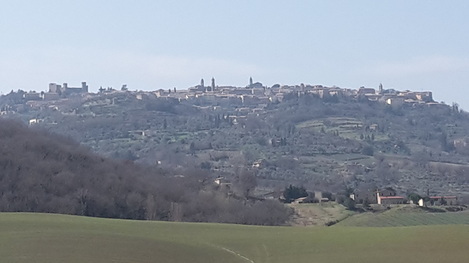 Montalcino
Montalcino Coffee in Montalcino, lunch in Pienza, and supper in Montepulciano. That was today’s plan: so far I had visited places in Tuscany I have seen before and today I wanted to see something new. These towns are no more than 30km from Siena, and are in the classic Tuscan region of the Crete Senesi ,those little rolling hillocks in an open landscape, each with a house on top surrounded by a few cypresses, and with an avenue of more along the drive, seeming randomly planted but with the effect of perfect beauty. The attractiveness is not by chance, though, for In fact this area, the Val D’Orcia, just south of Pienza, is a World Heritage site. This was one of the first areas when man, in the form of Siennese colonists, in the 14th and 15th centuries, planted and created a landscape specifically with beauty in mind.
Montalcino is a small place, with a single street running along a ridge, a little castle at one end and the church at the other.
Montalcino is a small place, with a single street running along a ridge, a little castle at one end and the church at the other.
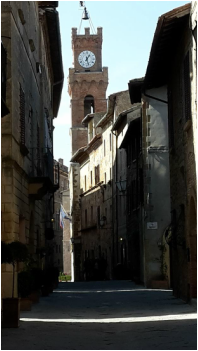
Pienza, at least the old city part of it, is equally small and occupies a similar spot on a ridge. Its particular significance is that Pope Pius II made this (his home town)his summer residence in the 15th century, and built a summer palace, the Piccolomini Palace, named after his surname. At that time the papacy was hereditary, and his son Pope Pius III also lived there. With this and associated buildings, it means that what is essentially a village is stuffed with riches,including some Borgia history, and for this reason is another World Heritage site.This picture shows the only street in old Pienza,the Borgia palace to the left,Palazzo Publico(with tower) and Pallazzo Piccolomini at the end.
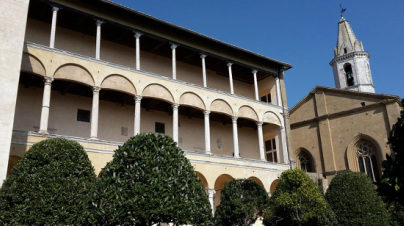 The Piccolomini Palace, and tiny cathedral,Pienza
The Piccolomini Palace, and tiny cathedral,Pienza After lunch in a nice little trattoria I visited the palace, last lived in by the Count Piccolomini, the Popes’ descendant, up until WW2.There were some interesting photos on display of his life among Italian society in the 20’s and 30’s,and the Mussolini era. The Count’s son was killed in the war, flying, and the palace was bequeathed to the municipality. It was a cold place, but full of contemporary 15th and 16th century furniture, owned by the family. I had a guided tour all to myself: it was very interesting but the audio guide I was given had a voice like Vincent Price, which didn’t help perk things up, and a little embarrassing as the guide had to trail me round.
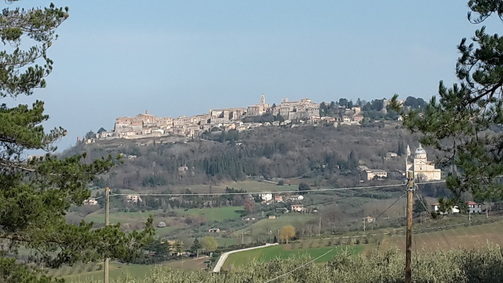 Montepulciano
Montepulciano After Pienza I headed for Montepulciano. While this also occupies a ridge, it is quite a bit bigger than the other two towns and involved a stiff walk getting up to the top, and along the whole town. I was intending to stay in the camper spot below the town, but having got there I found that it closed at 7am tomorrow for the weekly market, so not fancying having to get away before 7 ,I moved on. I saved myself 12 Euro in the process, the car park overnight charge, as the next nearest spot I then headed for was a gem, a free, dedicated camper spot in the little town of Torrita di Siena, with water, waste disposal, even with free electricity hook up. I was the only occupant tonight. The town itself has a perfectly decent little Centro Storico (Historic town centre), where all the medieval-looking flags were up for their annual parade on Sunday, but they probably miss out on most of the tourists.

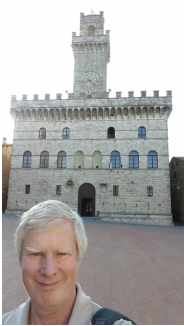
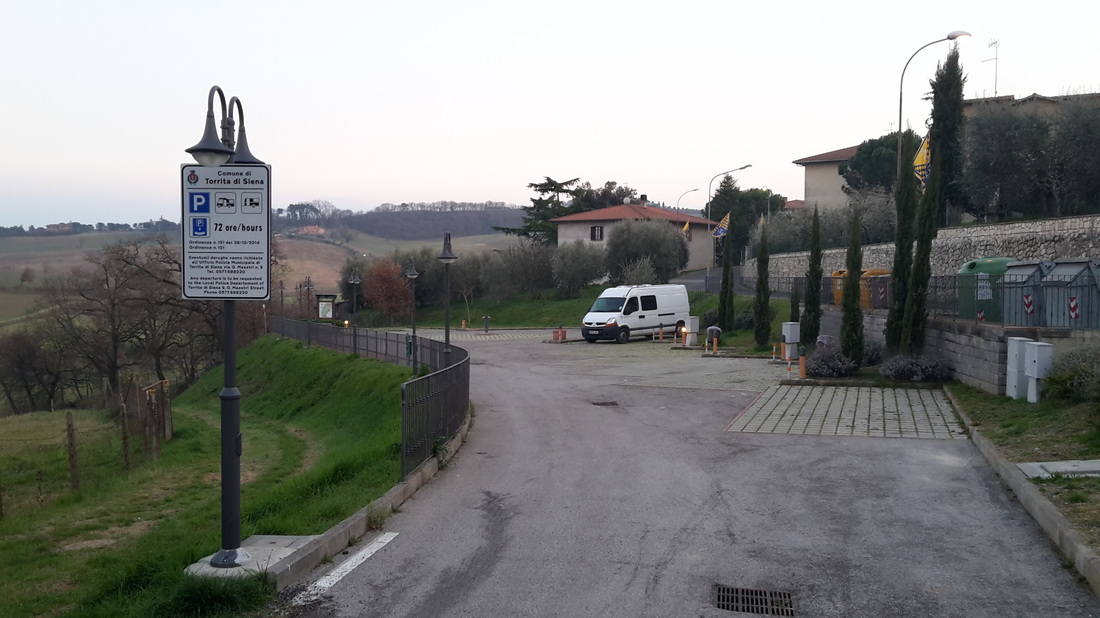
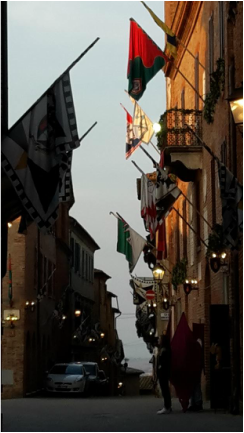
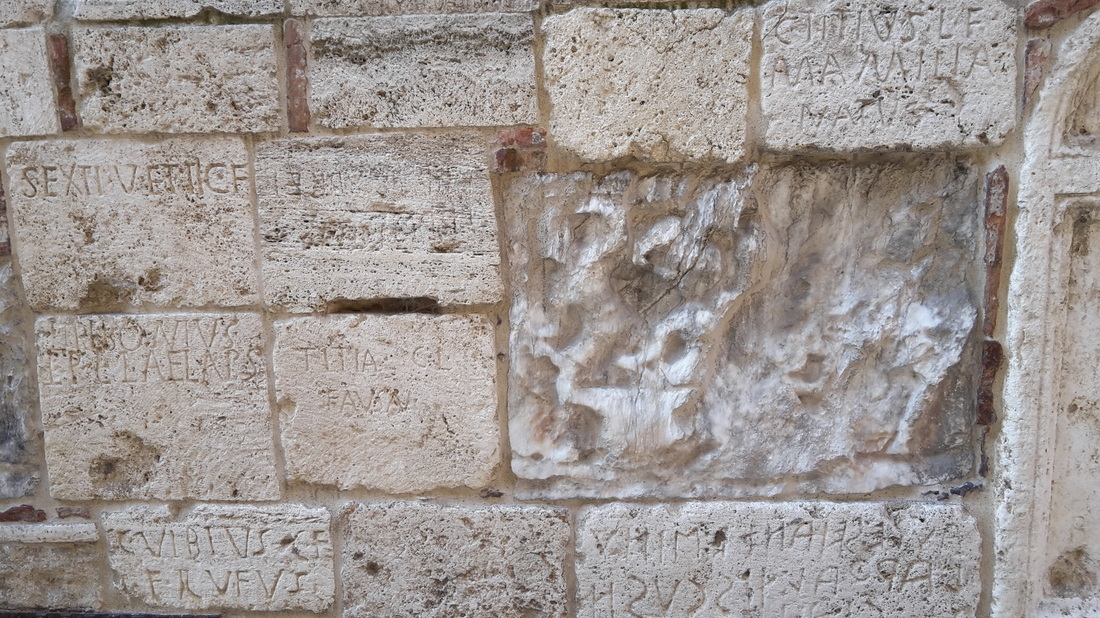
 RSS Feed
RSS Feed